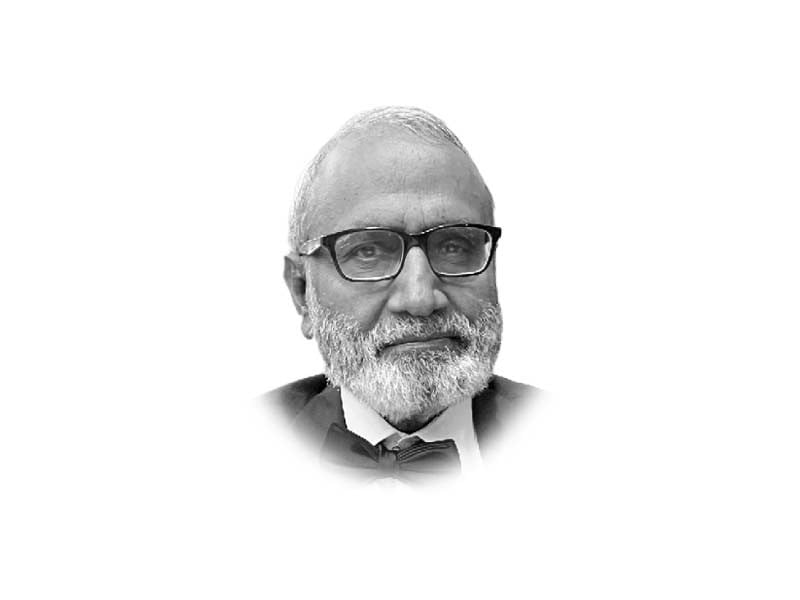
I am being asked why I have not commented on the budget. My problem is that I can’t find it anywhere. Even by Dar’s own standards, the budget speech concealed more than it revealed. The Annual Budget Statement (ABS), a constitutionally obligated document under Article 80, contains numbers that do not add up. It assumes a state of the economy that is ready to take off — IMF or no IMF. Despite some creative accounting, the GDP growth in FY23 is the third lowest in our history. In May, inflation increased nearly equally in food, energy and non-food, non-energy components. Might one say inflation, at least, was distributed equally! However, private sector borrowing for fixed investment, the main driver of growth, is significantly lower than FY22. These challenges, says the ABS ‘Statement of Purpose’, will be responded by substantial pro-poor allocations, austerity in government spending and investment in agriculture, industries and IT sectors.
While the allocation on social protection increases marginally from Rs437 billion to Rs465 billion, there is not a single item in the current expenditure reflecting the austerity intent. Out of the total current budget of Rs13.3 trillion, 8% will go to subsidies and 11% to grants and transfers. Out of the subsidies, the stated priority area of agriculture gets Rs30.7 billion and an equal amount to the profiteering fertiliser plants. An allocation of Rs35 billion for Utility Stores Corporation is a badly managed, pro-poor intervention. The rest, about a trillion, is for the usual suspects in energy, petroleum and industrial sectors. Again, the transfers and grants of a trillion and a half include Rs12.9 billion for agriculture and a billion for IT exports. Security enhancement, whatever that means, alone gets Rs60 billion. In the development budget under the Special Prime Minister’s Programme of Rs80 billion, agriculture receives Rs30 billion for solarisation of tubewells and Rs5 billion for Green Revolution 2.0. Ministry of National Food Security & Research is allocated Rs8.6 billion for ongoing schemes and just Rs250 million for three new, unapproved, schemes. With this casual approach, the agricultural growth target of 3.5% seems quite ambitious. Under the same programme, IT startups, venture capital and laptops get Rs15 billion. The seriousness can be judged by the fact that none of the schemes is approved under the due process. The IT Ministry’s programme focuses on special technology parks, technology research centres for new and cutting-edge technologies, besides cloud computing infrastructure. In contrast, a hefty sum of Rs90 billion has been allocated to the Sustainable Development Goals Achievement Programme, which the old parliamentarian’s programme by another name. The purpose is to provide financial capital to regain the lost political capital. In a word, the ‘Statement of Purpose’ is not adequately supported by money. The entire development spending of the federal and provincial governments would add only 0.1 percentage point to the rate of fixed investment. Infrastructure remains the priority number one in the PSDP. Agriculture receives Rs44.1 billion, a lot more than the amount of Rs13.7 billion in FY23, but is not commensurate with the priority assigned to the sector.
But there is money to be foregone in the form of tax expenditures, in addition to the money given in explicit subsidies to the powerful actors. These amount to Rs2,24 billion, in exemptions, concessions, deductible allowances, reductions in tax rates and zero rating of 57.8%, 23.3% and 18.9% in sales tax, customs duties and income tax. Need I say more on high fiscal deficits.
Published in The Express Tribune, June 16th, 2023.
Like Opinion & Editorial on Facebook, follow @ETOpEd on Twitter to receive all updates on all our daily pieces.


1734600943-0/Untitled-(64)1734600943-0-165x106.webp)
1734602586-0/Bobbi-Althoff--(1)1734602586-0-165x106.webp)
1721377568-0/BeFunky-collage-(18)1721377568-0-165x106.webp)
1734599322-0/Untitled-(61)1734599322-0-165x106.webp)






1734468458-0/Copy-of-Untitled-(50)1734468458-0-270x192.webp)

1734511806-0/Untitled-design-(5)1734511806-0-270x192.webp)





COMMENTS (1)
Comments are moderated and generally will be posted if they are on-topic and not abusive.
For more information, please see our Comments FAQ